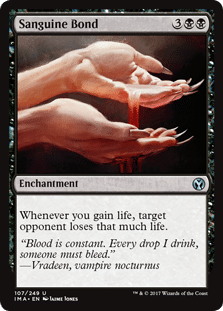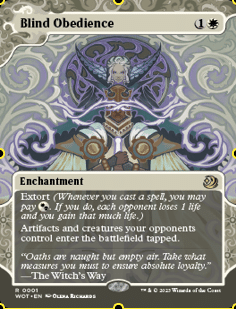Life gainers are a type of card meant to increase the player’s life total. Since most wins in MTG are achieved by reducing the opponent’s life to 0, life is considered a fundamental resource in the game. Gaining life is equivalent to buying time, providing the player with more opportunities to stabilize the battlefield or deal fatal damage to the opponent.
Life gainers under stability tests:
Despite their utility in protecting the player and buying them time, mana gainers should be considered situational as a group. Other types of spells, such as creatures and removals, can often perform these tasks more effectively. Life gainers only become preferable in specific circumstances. Why? Life gainers do not trade for one of the opponent’s cards, leading to a negative card balance. Creatures and removals can prevent players from losing life more efficiently by neutralizing or eliminating the source of the threat. For instance, if the opponent controls an unchecked 4/4 creature, it will reduce your life by 4 each turn. Such a creature needs ‘only’ five turns to bring your life total to 0. A spell that allows you to gain 4 life each turn or 20 in one shot would be rare and likely expensive in terms of mana or cards. Creatures capable of trading or removals able to eliminate the source of the threat would be much more economical and abundant. Moreover, these alternatives may serve other purposes, while life gainers are only useful for, well, gaining life.

In some situations, there is no good replacement for life gainers. For example, when the opponent can inflict direct damage using spells such as Blind Obedience.

Blind Obedience
mana costs:
mana amount: 2
complexity: 2
Sometimes, life gain works in synergy with other cards, providing the player with more benefits than just buying time. For instance, cards like Sanguine Bond create additional advantages when paired with life gain. In other situations, life is used as a source to produce an effect, and gaining life may act as a feeder for that source, as seen with cards like Necro Potency. However, these are specific circumstances that do not occur frequently in the game.

Sanguine Bond
mana costs:
mana amount: 5
complexity: 2

Necropotence
mana costs:
mana amount: 3
complexity: 3
Life has its uses…
Card Evaluation: Stability, Situationality, and Deck Relevance
| Card Category | Description | Stability | Comments | Stable In |
| Creatures | The most central component in Limited; they define board presence | Stable | Most decks rely on creatures to win; evaluation depends on mana curve and stat-efficiency | Always |
| Removal Spells | Spells that destroy or neutralize creatures | Highly Stable | Universally useful; key determinant of deck strength; instant-speed removal is especially valued | Always |
| Combat Tricks | Spells that temporarily enhance creatures during combat | Situational | Effectiveness depends on surprise and board state | Aggro |
| Counterspells | Spells that counter opponent’s spells | Situational | More useful in Constructed; weaker in Limited due to reactive nature and tempo concerns | Control |
| Card Draw / Filtering | Cards that allow drawing extra cards or improving card quality | Moderately Stable | Better in slower formats; strength depends on mana cost and format speed | Control / Midrange |
| Mana Fixing / Ramp | Cards that help stabilize or accelerate mana | Moderately-Stable | Crucial in multicolor decks or slower formats; less important in low-curve aggressive decks | Multicolor / Ramp / Control |
| Enchantments / Auras | Permanent effects attached to creatures or on board | Situational | Risky (especially Auras) | Aggro / Synergy Decks |
| Life Gainers | Cards that provide life gain effects, either one-time or recurring | Situational | Usually weak unless supported by synergy or specific matchups; better against aggressive decks or when part of a life-gain synergy | Lifegain / Control / Matchup-Dependent |

